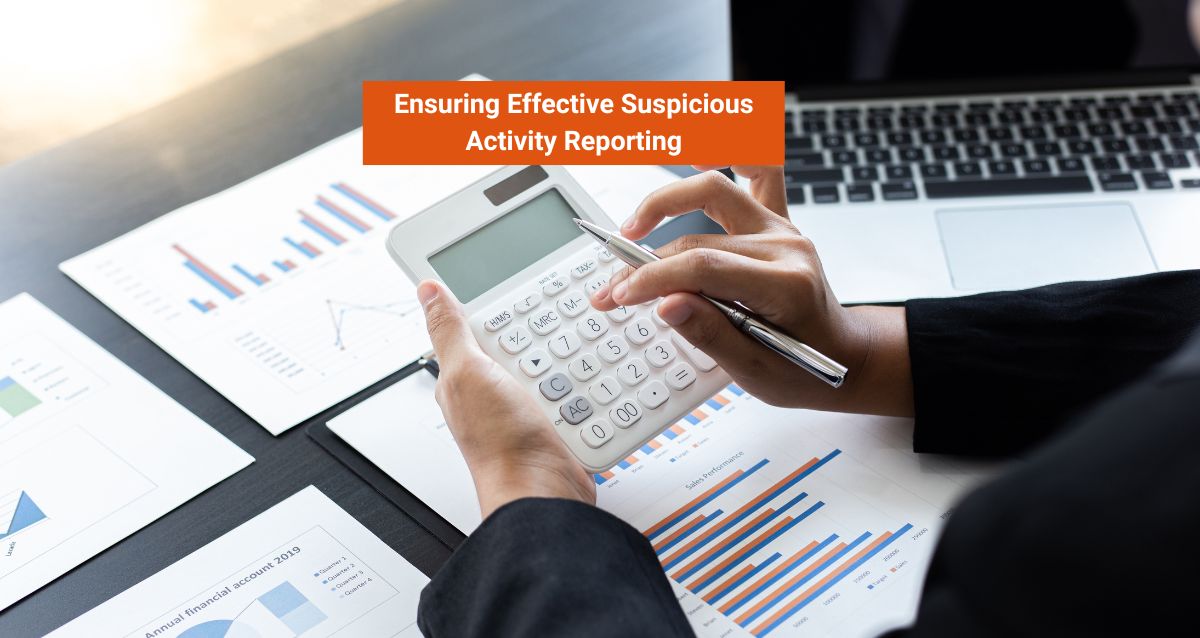Ensuring Effective Suspicious Activity Reporting
To ensure effective suspicious activity reporting, DNFBP should follow the best practices below:
-
- Software for transaction monitoring can be used to highlight unusual behavior.
-
- Make sure that every employee, especially those who deal with clients, is knowledgeable with SAR protocols, rules, and common dangers.
-
- As quickly as you can, report any potentially suspicious conduct.
-
- Maintain a record of all SARs to ensure oversight of the reporting process and keep it up to date.
-
- Conduct an in-depth investigation and analysis to learn as much as you can about the conceivably suspicious behavior.
-
- Investigate suspicious activity thoroughly and in a timely manner.
In addition, DNFBP should establish and maintain an effective anti-money laundering (AML) program, which includes procedures for detecting and reporting suspicious activity. To track and spot anomalous activity, the proper policies, procedures, and processes must be in place.
Compliance officers should also be trained to identify suspicious activity, even if it does not involve hard evidence. Finally, organizations can improve their awareness and reporting of suspicious activity by staying current with regulatory requirements and using tools to stay compliant.
Risk Indicators Suggesting Suspicious Activities
DNFBP and regulatory bodies are constantly on the lookout for red flags that signal potential suspicious activity. These red flags are differentiated according to the client, source of funds, choice of lawyer, nature of retainer, etc.
Here are some common risk indicators suggesting suspicious activity:
-
- Insufficient or Suspicious Information: Customers who provide insufficient or suspicious information may be trying to conceal their identity or the true nature of their business.
- Unusual Transactions: Transactions that are unusual for the customer or the type of business they are engaged in may indicate suspicious activity. This could include sudden unanticipated changes in a customer’s transaction pattern, using an unusual number of large denomination bills in cash transactions, or parties involved in the transaction being located in a high-risk country.
- Avoiding the Record-Keeping System: Customers who try to avoid the record-keeping system, such as by insisting on paying in cash or using multiple accounts, may be trying to conceal their transactions
- Multiple Accounts: Customers who have multiple accounts with the same financial institution, or with different institutions, may be trying to spread out their transactions to avoid detection
- Unusual Source of Funds: Transactions that involve an unusual source of funds, such as a third party or an offshore account, may indicate suspicious activity
- Unexplained Wealth: Customers who have unexplained wealth or who engage in transactions that do not match their known income or assets may be engaging in suspicious activity.
- Large Value Transactions: Customers who suddenly start making large value transactions, contrary to the transaction history, may indicate suspicious activity.
- Insufficient or Suspicious Information: Customers who provide insufficient or suspicious information may be trying to conceal their identity or the true nature of their business.
Employees’ Roles in Detecting ML/FT-related Suspicious Activities
Employees play a crucial role in detecting ML/FT-related suspicious activity. Here are some crucial details about their function:
-
- Training: Employees need to be trained on ML/FT risk indicators, identifying suspicious activities, and appropriately reporting them to the relevant authorities, such as the Financial Intelligence Unit (FIU). AML training is critical for employees to act as a line of defense and contribute to making the company a hostile setting for money laundering.
- Knowledge of Indicators: Employees should be familiar with ML/FT indicators and typologies to quickly identify potential threats in routine business operations. These indicators, combined with facts and context, can help determine if there are reasonable grounds to suspect that a transaction is related to ML/FT offenses.
- Reporting: Employees should know the process for identifying, investigating, and reporting suspicious transactions to the appropriate authorities, as specified in the company's policies and procedures. Prompt and accurate reporting is crucial in combating ML/FT activities.
- Collaboration: Employees should collaborate with their colleagues and relevant departments to share information and identify patterns or abnormal behavior that may indicate ML/FT activities. This can involve global transaction monitoring, alert processing, and checking for similar behavior across different transactions.
- Training: Employees need to be trained on ML/FT risk indicators, identifying suspicious activities, and appropriately reporting them to the relevant authorities, such as the Financial Intelligence Unit (FIU). AML training is critical for employees to act as a line of defense and contribute to making the company a hostile setting for money laundering.
By fulfilling these roles, employees can contribute to the detection and prevention of ML/FT-related suspicious activity, helping to safeguard the company and the financial system as a whole.
Get in touch with one of our professional experts to get a comprehensive consultation for your Accounting, Bookkeeping, Tax, Compliance, and Auditing needs.
We got you covered and no need to worry about being compliant with the UAE laws. Outsource your requirements with Flyingcolour Tax Consultant LLC and attain financial haven.
To learn more about Ensuring Effective Suspicious Activity Reporting, book a free consultation with one of the Flyingcolour team advisors.
Disclaimer: The information provided in this blog is based on our understanding of current tax laws and regulations. It is intended for general informational purposes only and does not constitute professional tax advice, consultation, or representation. The author and publisher are not responsible for any errors or omissions, or for any actions taken based on the information contained in this blog.
